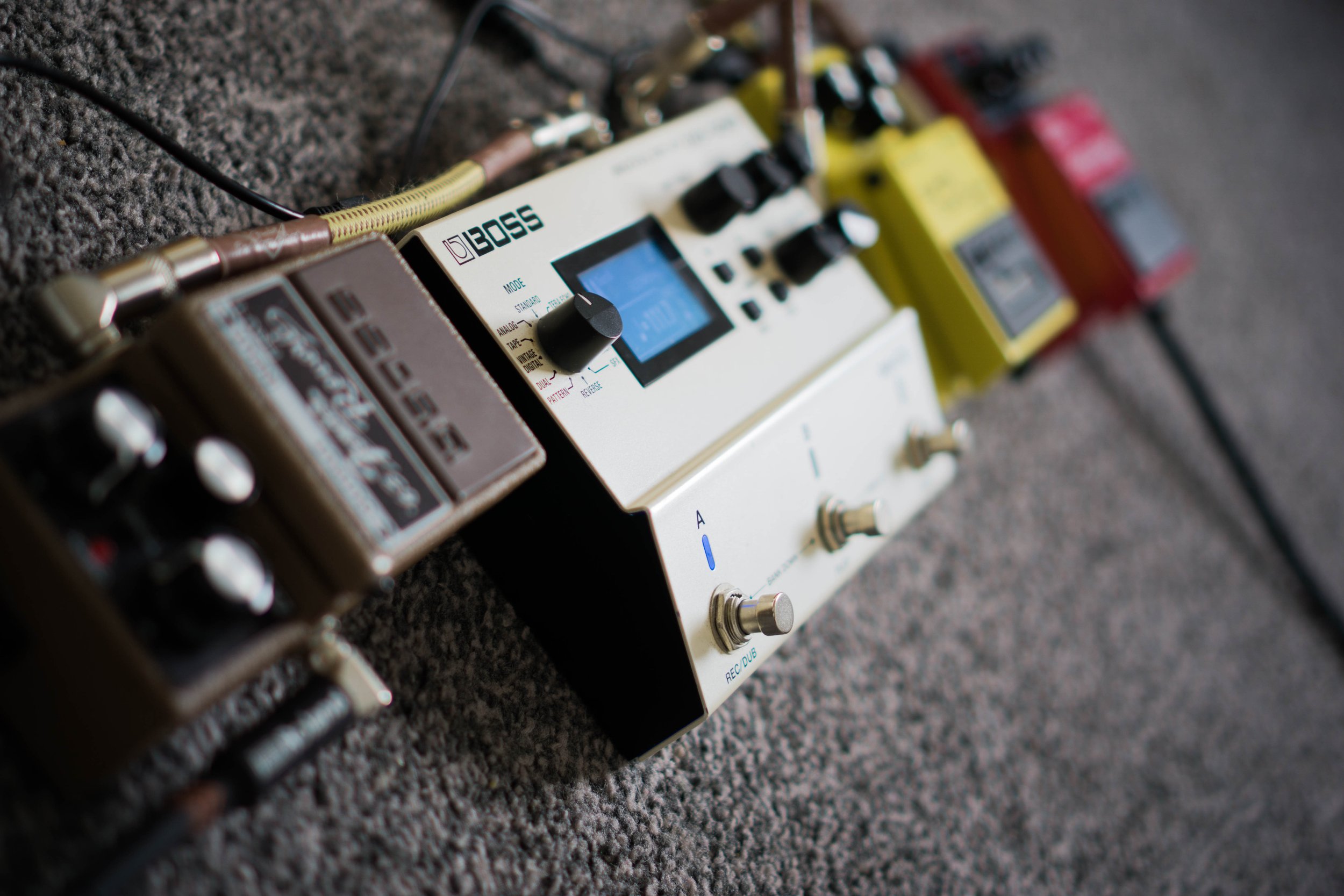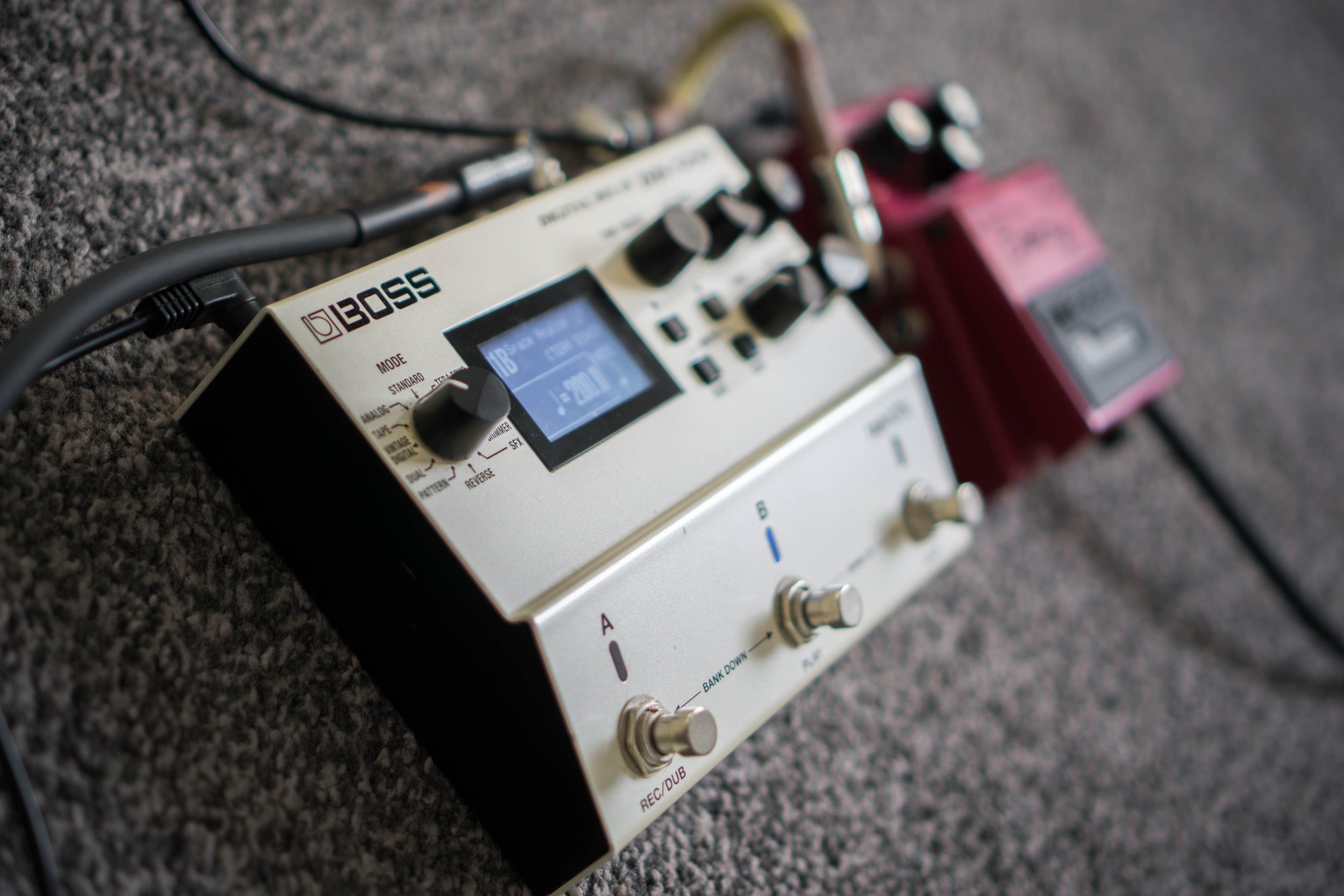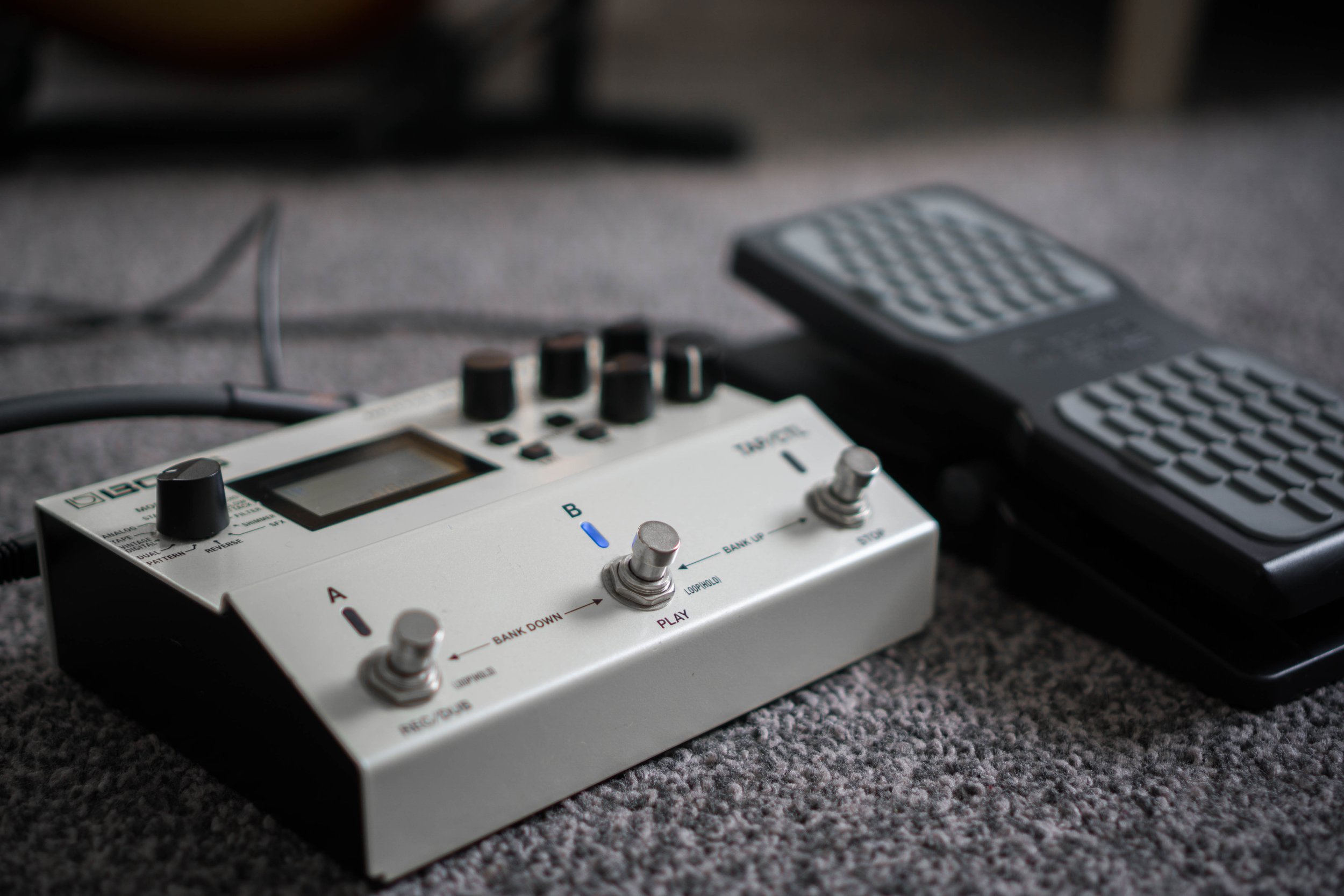Boss DD-500
The king of digital delay.
£329 at amazon.co.uk | £375 at thomann.de
With the DD-500, Boss created the most powerful and versatile delay pedal yet. It offers 12 distinctive delay modes with exceptional audio quality. You get your standard digital options, a very convincing analog delay, and the highly popular Tera-Echo. You also get additional deep edit control parameters for each effect, 200 memory patches and MIDI controls. The DD-500 has every feature you could think of in a fairly compact package!
The specs are truly unmatched. The DD-500 uses 32bit/96kHz digital audio processing. For comparison, the Strymon Timeline has a 26bit/96kHz processor. 32 bits means that each digital sample (of which there are 96,000 in every second) can have one of roughly 4 billion values. Strymon’s 26 bits can only have 16 million different values. For live performances, you won’t be able to tell the difference (I certainly can’t), but it does come in handy for studio recordings! You also get stereo inputs and outputs.
There are 12 delay modes onboard. Some are phenomenal and some I wasn’t quite sure what to make of. The 5 control knobs let you quickly dial in the sound you want. Time, feedback and tone are obvious. The level knob, lets you set the delay level. Maxing this out will have your first repeat be the same volume as your dry signal. If you max out the level and set feedback to zero, it will do a single repeat at the input volume. You can get some really complex-sounding licks this way! Mod depth lets you add a chorus effect to your delay. Every effect will also have many more “deep edit” parameters that can be set by pressing the EDIT button. There you can set things like dry signal level (including removing it completely), modulation frequency, note type (dotted eighths sound especially cool), stereo panning and many many more!
Standard is a clear digital delay. It is what you would expect and is also the mode I use the most. The multitude of deep edit options let you take full creative control of the effect. My favourite setting is to select the dotted eight note, max out the delay effect and set feedback fairly low. No modulation. Tap in your tempo and play some scales. It sounds particularly good with single coils and a compressor.
Analog is basically a Boss DM-2W. I played them side by side, and you can get them to sound completely identical, including the glitchy pitch shifts, when using an expression pedal for the delay time. The DD-500 doesn’t stop there. Unlike the DM-2W, you can change the tone, add modulation and have delay times way beyond what is available on the DM-2W.
Tera Echo is an exact copy of the Boss Tera Echo pedal. It is a very smooth swell/phaser type delay. Works especially great if you are playing slow chord sequences or arpeggios. It’s nice to see the Tera Echo getting its own setting on the DD-500, further improving the bang for the buck of this versatile pedal.
The Slow Attack sounds kind of like a Reverse delay (also available on this unit), where the volume of each repeat will start low and go up before fading. It is a nice addition, as the Reverse delay can sound too dissonant at times. Filter adds a phaser effect and Shimmer increases the pitch of the delay sound. Both can be used to add interesting textures to your tone. Tape and Vintage Digital are also good replicas of very popular vintage effects. SFX is described by Boss as “Delay with a sound-effect character”. Not a very clear description. As far as I could tell it is a low fidelity effect, where you can select the bitrate of the audio signal. You can take it from 32 all the way down to 2 bits (at that point each repeat can have one of 4 possible sounds), and just sounds like fart noises.
Dual and Pattern delays are very creative too. You can use multiple digital delays with different time signatures in sequence or in parallel. Pattern lets you use 16 different digital delay sounds! Whenever I try to use it it just sounds like a mess.
The user interface takes some getting used to, but once you figure it all out, it’s quite intuitive. You can save a preset by pressing the EXIT and EDIT buttons together. This will store it in your selected Memory Patch (1-99) for the currently active footswitch (A or B). You can press switches A+B together to go down a memory bank, or B+TAP to go up. This is very useful as you can have 2 distinct delay sounds for 99 different songs! Switching memory patches is quick and can also be done mid-song.
The function of the TAP/CTL footswitch is programmable either for each preset or globally. Holding it down can trigger various functions from slowly fading out the delay to maxing out feedback and many more! You can also connect an expression pedal and have it control whichever parameter you like.
There’s also a 60-second looper on board (2 minutes, if you lower the recording quality a bit). To engage it, you press and hold either the A or B footswitch. You get Rec/Overdub, PLAY and STOP footswitches. Hold STOP to exit the looper. Simple and effective!
So are there any negatives about this pedal? Not really. It is a shame that Boss did not include their new Space Echo effect as an option, although that is available on their RV-500 reverb pedal. It is also a very complex unit and took me several days to get the hang of. The deep edit settings, as well as the various global configurations can be too much. Contrast that to the DM-2W, which was a joy to play as soon as I took it out of the box. That should be your main consideration when buying this unit - do you really need all of these features? According to Boss themselves, less can be more! So maybe check out the Boss DD-3T first. At this price point, it is also worth considering a Multi-FX unit, as it will do a whole lot more than just delay.
Bottom Line
The Boss DD-500 is a best-in-class high-fidelity delay pedal and looper. It will easily replace all your existing delay units. The DD-500 can take some getting used to, especially if you want to utilize the deep edit functionality. Once you get the hang of it though, it is very intuitive. For £350 you really get a lot of delay here!





